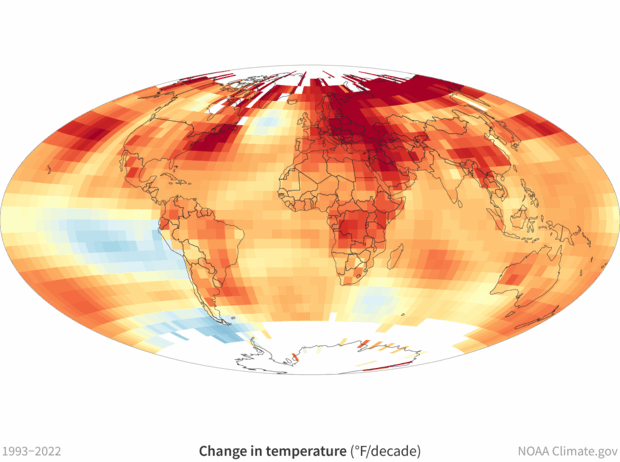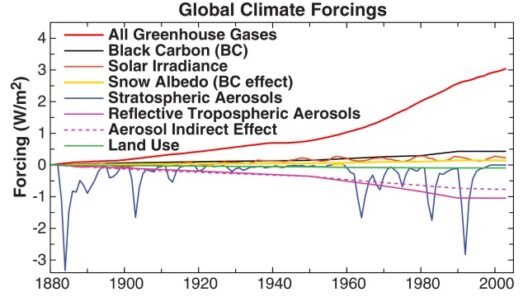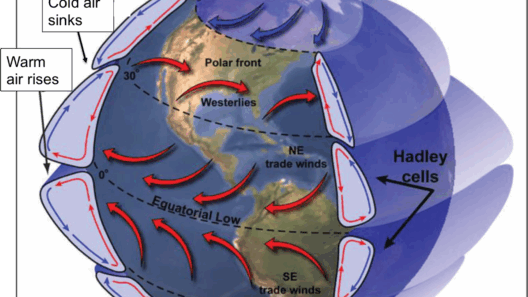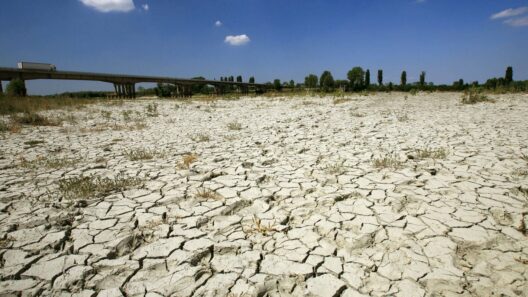As we venture into an unprecedented era of climate dynamics, the prediction of Earth’s temperature transcends mere scientific inquiry; it embodies a profound exploration of our planet’s health and humanity’s future. The fascination surrounding temperature forecasts often stems from their monumental implications. The quest for accuracy in this arena is not just a scientific endeavor but a survival imperative.
Temperature predictions are inherently tied to climatology, which examines atmospheric patterns and their interactions with terrestrial processes. The sophisticated methodologies employed range from empirical observational studies to complex climate models. These models are steeped in intricate physics and encapsulate the chaotic nature of the Earth’s climate system—a reality characterized by myriad variables interacting on different scales.
To grasp the enormity of temperature shifts, one must consider the historic temperature records. Geological evidence illustrates that Earth’s climate has experienced dramatic fluctuations, driven by natural phenomena such as volcanic eruptions, solar radiation variations, and Milankovitch cycles, which involve changes in the Earth’s orbit. Such historical context enriches our understanding of current trends. Today, however, the rate and consistency of warming surpass natural patterns; human influence, notably through greenhouse gas emissions, has become the rampant protagonist in this climatic narrative.
The phenomenon of rising global temperatures can be distilled into a few critical concepts: greenhouse gases, feedback mechanisms, and tipping points. Greenhouse gases, such as carbon dioxide and methane, trap heat within the atmosphere through the greenhouse effect, leading to enhanced warming. The interplay of these gases with feedback mechanisms, like cloud cover and ice melt, exacerbates temperature increases. For instance, as polar ice caps diminish, less sunlight is reflected back into space, resulting in further warming—a vicious cycle that can lead to irreversible damage to ecosystems.
Equipped with advancements in technology and computational power, scientists employ a plethora of tools to forecast temperature changes. Climate models, such as General Circulation Models (GCMs), simulate the Earth’s climate system by incorporating numerous variables, including oceanic currents, atmospheric chemistry, and land surface processes. These models generate projections based on various emission scenarios, illuminating potential futures of our planet. Yet, the inherent unpredictability of climate systems complicates the forecasts. As initial results indicate, the divergence of future temperature projections can lead to uncertainty and debate among experts.
Addressing this uncertainty requires a multifaceted approach. Incorporating paleoclimate data enriches current models by providing insights into Earth’s historical climate responses. Such interdisciplinary methodologies reveal how ecosystems have previously adapted or succumbed to climatic shifts. Additionally, interdisciplinary collaboration, pooling expertise from fields like oceanography, ecology, and atmospheric sciences, augments the predictive capabilities of climate models. This collective intelligence can refine projections and advocate for targeted climate solutions.
A more profound inquiry into temperature predictions sheds light on societal implications. As temperatures rise, we behold potential consequences that challenge our very existence: sea-level rise, increased frequency of extreme weather events, and disruptions to agriculture. Each of these ramifications feeds into the larger matrix of societal stability. The agony of famine, displacement, and communal strife is not merely an abstract concept but a tangible reality heightened by climate-induced temperature shifts. This societal context underscores the urgency for action and informed discourse surrounding climate prediction.
Moreover, the fascination with temperature predictions is intertwined with the psychological aspect of humanity’s relationship with nature. The emotional resonance of witnessing environmental degradation fuels a desire for understanding and, often, despair. The anxiety over climate forecasts reflects a deeper existential concern: the potential obliteration of our way of life and the intricate systems that sustain it. This psychological dimension invigorates activism and advocacy, creating a powerful impetus for collective action.
Citizens are often spurred into action by alarming predictions. The cognitive dissonance between comforting ignorance and daunting scientific foresight can galvanize public interest and foster grassroots movements. Activism thrives on narratives of hope, resilience, and the human capacity to adapt—a juxtaposition against the backdrop of dire forecasts. This duality is critical for mobilizing communities toward substantive change and encouraging policy reforms that prioritize climate action.
As we parse through the layers of temperature predictions, it becomes clear that these forecasts are pivotal, not just for their scientific merit but for their implications on moral and ethical grounds. The moral obligation to future generations compels us to respond to climate realities. This responsibility extends beyond national borders, advocating for global collaboration. Climate change knows no boundaries, and its effects are universally felt, highlighting the necessity for collective stewardship of the Earth.
Ultimately, the saga of Earth’s temperature predictions is far from a static narrative; it is an evolving story, rich with complexity and existential weight. It invites us to ponder deeper questions regarding humanity’s role in shaping the planet’s future. As technology advances and our understanding deepens, may we harness this knowledge not only for predictive accuracy but as a catalyst for transformative action against climate change, ensuring a livable world for generations yet unborn.








